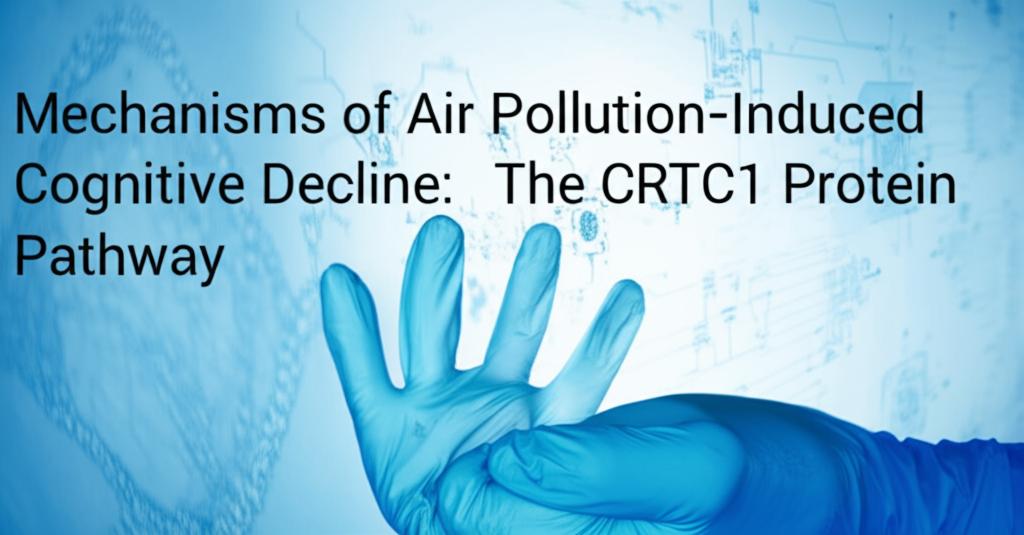Recent scientific investigations have illuminated a critical molecular pathway through which air pollution may contribute to cognitive decline and neurodegenerative diseases like Alzheimer's. This research focuses on a protein called CREB-regulated transcription coactivator 1 (CRTC1) and a chemical modification process known as S-nitrosylation.
The "SNO-Storm" in the Brain:Air pollution, originating from sources like wildfire smoke, vehicle exhaust, and even certain processed foods and pesticides, can increase levels of nitric oxide (NO) and related molecules in the brain. This can trigger a chemical reaction called S-nitrosylation, where an NO-related molecule attaches to sulfur atoms within proteins. This process, sometimes referred to as a "SNO-storm," can alter the function of these proteins.
CRTC1 and its Role in Memory:CRTC1 is a vital protein for normal brain function, playing a key role in regulating genes essential for learning, memory, and the formation and maintenance of connections between brain cells (synaptic plasticity). It works in conjunction with another important brain protein called CREB (cAMP response element-binding protein). In a healthy brain, CRTC1 and CREB partner to activate genes crucial for these cognitive processes.
How Air Pollution Disrupts the CRTC1 Pathway:New research, with findings published in early 2025, has demonstrated that S-nitrosylation directly affects CRTC1. This chemical modification does not prevent CRTC1 from moving to the cell's nucleus, where it needs to be to interact with CREB. However, S-nitrosylation directly interferes with CRTC1's ability to bind to CREB once it's in the nucleus.
This disruption of the CRTC1-CREB partnership prevents the activation of genes necessary for maintaining healthy brain cell connections and supporting memory. Essentially, the S-nitrosylation of CRTC1 acts as a blockage, hindering the protein's normal function and leading to a cascade of negative effects on brain cells, including impaired ability to form new connections and, ultimately, cell damage or death.
Evidence from Research:Scientists have observed this S-nitrosylation of CRTC1 and its detrimental effects in various models:
- Laboratory-grown brain cells: Exposure of these cells to molecules that cause S-nitrosylation showed that CRTC1 was indeed affected.
- Mouse models of Alzheimer's disease: High levels of S-nitrosylated CRTC1 were found at early stages of the disease in these models.
- Human nerve cells derived from stem cells of Alzheimer's patients: Similar effects were observed, validating the findings in a human context. Introducing a modified version of CRTC1 that could not undergo S-nitrosylation into these cells prevented signs of disease, such as the withering of nerve cell connections and decreased nerve cell survival. In mouse models, this modified CRTC1 restored the activation of memory-related genes and improved synaptic plasticity.
These findings provide a direct biological link between exposure to air pollutants and the mechanisms underlying cognitive decline and neurodegenerative conditions like Alzheimer's disease. The research suggests that the S-nitrosylation of CRTC1 is a key event that causally contributes to memory loss.
Future Directions and Potential Therapies:This discovery opens new avenues for developing treatments and preventative strategies for brain diseases linked to environmental factors. The fact that blocking the S-nitrosylation of CRTC1 can improve brain function suggests that targeting this chemical process is a promising therapeutic strategy. Researchers are now exploring the development of drugs that could specifically prevent S-nitrosylation or reverse its effects, potentially offering new ways to protect the brain from the harmful impacts of air pollution and other environmental toxins. This could lead to new drugs to better treat conditions like Alzheimer's disease by rescuing molecular pathways involved in memory formation.
Furthermore, these findings may also help explain why the risk of Alzheimer's disease increases with age, as aging is associated with increased inflammation and NO levels in the brain, making proteins more susceptible to harmful S-nitrosylation reactions.

